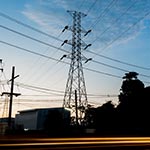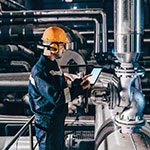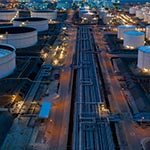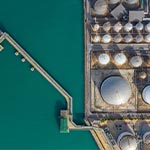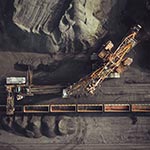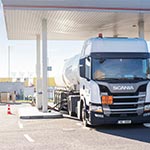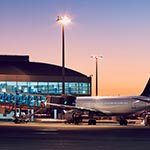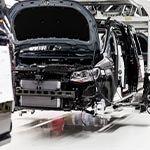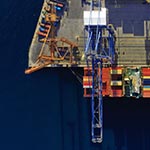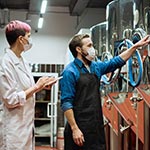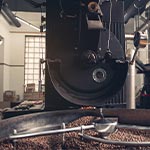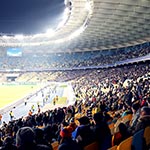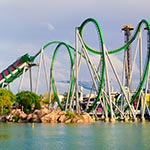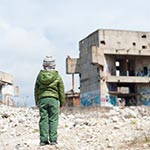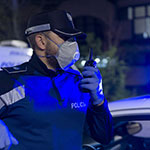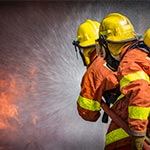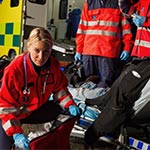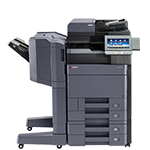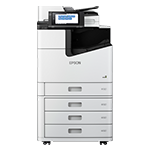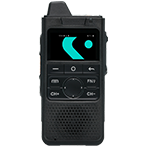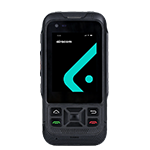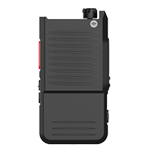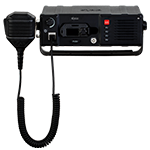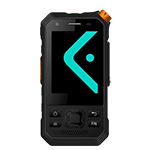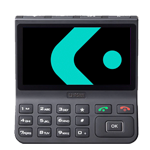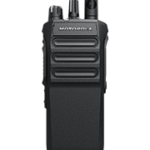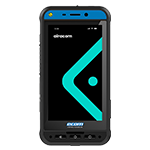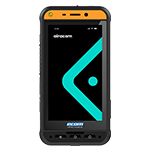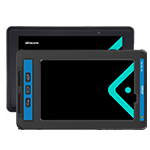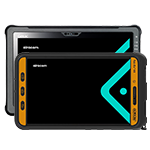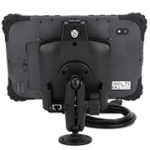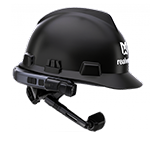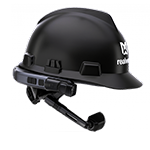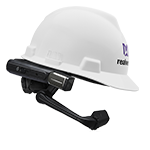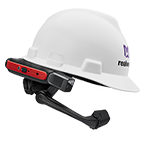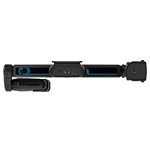EAC Certified
EAC certification mark for the EAEU region explained
EAC stands for the Eurasian Conformity mark, which is a certification mark indicating that a product meets the technical regulations of the Eurasian Economic Union (EAEU).
The EAEU is a political and economic union of five member states, including Armenia, Belarus, Kazakhstan, Kyrgyzstan, and Russia, that seeks to create a single market for goods and services. Companies and employees operating within a potentially explosive atmosphere within the EAEU region must use equipment certified as EAC-EX. The EX certificate is an official confirmation that the equipment meets all technical requirements for explosion-proof equipment in Russia and the EAEU of Belarus, Kazakhstan, Armenia, and Kyrgyzstan.
What is the objective of the EAC-Ex certification and where is it used?
The EAC-Ex certification system is based on the IECEx certification scheme and covers electrical and non-electrical equipment used in potentially explosive atmospheres. The certification process includes testing and evaluation of equipment to ensure that it meets the technical requirements and safety standards set by the EAEU member states.
The EAC-Ex certification mark indicates that the equipment has been tested and certified to meet the necessary technical requirements and safety standards for use in potentially explosive atmospheres within the EAEU member states. This provides assurance to users and regulatory authorities that the equipment is safe to use in hazardous environments and helps to reduce the risk of accidents and incidents.
About IECEx certifications?
IECEx enables manufacturers, regulators, and users of hazardous area equipment to address the risk of fires or explosions from flammable gasses or dusts. Equipment testing and certification to globally recognised high standards facilitate the sale of safer products worldwide while lowering costs.
The safety of commercial facilities and the people operating them depends firmly on the competencies of all responsible safety management, planning, installation, operation, inspection, and maintenance personnel. IECEx PCC (certified personnel scheme) offers the evaluation and certification of competencies of individuals. Make competent decisions around health and safety tailored to a worker’s specific job function, essential to maintaining high levels of operational safety and compliance.
Equipment and protective systems intended for use in a potentially explosive atmosphere can cover a range of locations plus many more not listed below:
Understanding hazardous areas
Hazardous area classification for EAC-Ex within the EAEU
EAC-Ex certification system provides a comprehensive framework for ensuring the safety of equipment used in hazardous environments within the Eurasian Economic Union (EAEU). By classifying hazardous areas and equipment according to their level of risk and protection, the system helps to reduce the risk of accidents and incidents, ensuring the safety of workers and assets in potentially explosive atmospheres.
The EAC-Ex certification system uses a zone and group classification system for hazardous areas and equipment used in those areas, which is similar to the North American division and class system. Hazardous areas are classified based on their degree of risk, with gas atmospheres classified as Zones 0, 1, and 2, and dust atmospheres classified as Zones 20, 21, and 22. Equipment used in hazardous areas is classified based on its level of protection, with the required level of protection determined by the classification of the hazardous area and the nature of the equipment.
Equipment Category
Zone 0
An area where explosive gas atmospheres are present continuously or for long periods of time.
Zone 1
An area where explosive gas atmospheres are likely to occur occasionally in normal operation.
Zone 2
An area where explosive gas atmospheres are not likely to occur in normal operation, but if they do occur, they will only be present for a short period of time.
Ignition Protection
Ex d
Flameproof equipment that can withstand an internal explosion and prevent it from igniting the surrounding atmosphere. Suitable for use in Zone 1 and Zone 2.
Ex e
Increased safety equipment that minimizes the risk of sparking or overheating. Suitable for use in Zone 1 and Zone 2.
Ex i
Intrinsically safe equipment that is designed to prevent the buildup of energy that could ignite a flammable atmosphere. Suitable for use in Zone 0, Zone 1, and Zone 2.
How does EAC-Ex facilitate the objective of ensuring the safety of equipment?
The EAC-Ex process helps facilitate the objective of ensuring the safety of equipment used in hazardous environments within the Eurasian Economic Union:
Equipment Verification: EAC-Ex verifies that equipment intended for use in potentially explosive atmospheres meets the technical requirements and safety standards set by EAEU member states.
Equipment Covered: EAC-Ex covers electrical and non-electrical equipment used in potentially explosive atmospheres
Certification Process: The EAC-Ex process includes testing and evaluating to ensure compliance with technical requirements and safety standards based on the globally recognized IECEx certification scheme, ensuring international harmonisation of standards
Harmonisation: The EAC-Ex certification scheme reduces the need for multiple national certifications in each EAEU country and streamlines the process of international trade in hazardous area mobile devices or equipment.
Industries using EAC-Ex certified equipment in the EAEU region?
Due to the nature of refining, manufacturing or processing product, there are many Industries which use EAC-Ex-certified smartphones and tablets within a hazardous area, including oil and gas, petrochemicals, and mining industries where there is a risk of explosion due to the presence of flammable substances is high.
Oil and Gas
Chemical Manufacturing
Pharmaceuticals
Food and Beverage Processing
Mining and minerals
Paints and Coatings
Pulp and Paper
Agriculture and Forestry
Waste and Recycling
Water and Wastewater Treatment
Aerospace and Defence
Automotive Manufacturing
Construction and Demolition
Energy and Utilities
Marine and Offshore
Railways and Transportation
Textiles and Clothing
Healthcare
Manufacturing and R&D
EAC-EX legal framework passed and present?
On February 15, 2013, the Ex certificate of conformity in Russia was carried out in accordance with the GOST standards that were originally developed in the USSR and continued to be used in Russia after the dissolution of the Soviet Union. The GOST certificate was used as the EAC EX certificate of conformity. Following the coordination of the Technical Regulation in the Eurasian Economic Union (EAEU) between Russia, Belarus, Kazakhstan, Armenia, and Kyrgyzstan, the new EAC certification rules were introduced with the entry into force of the Technical Regulation TR CU 012/2011 on the safety of equipment for operation in explosive atmospheres.
Which countries adopt EAC-Ex certification?
The EAC-Ex certification system is specific to the Eurasian Economic Union (EAEU) member states, which include Armenia, Belarus, Kazakhstan, Kyrgyzstan, and Russia. Therefore, the EAC-Ex certification is primarily used in these countries and is mandatory for many products sold within the EAEU, including electrical and electronic equipment and machinery.
However, some intrinsically safe tablet and mobile device manufacturers may choose to obtain EAC-Ex certification for their products even if they are not sold within the EAEU. This may be because it is easier to obtain EAC-Ex certification covering all of the EAEU countries rather than multiple national certifications or because it provides additional assurance to customers and regulatory authorities that the product meets international safety standards for use in potentially explosive atmospheres
Global Certifications
Global certification schemes for electronic equipment designed for use across hazardous areas
Mobile devices and communications equipment reliably tested and certified for safe operation across major industries around the world. Each industry requires focused expertise to ensure product certification that adheres to strict national and international standards.
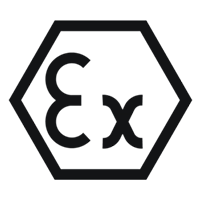
ATEX Certified.
The European standard for the safe use of equipment where there is potential for an explosive atmosphere present.

IECEx Certified.
The internationally accepted standard by organisations for the safe use of equipment within hazardous areas.
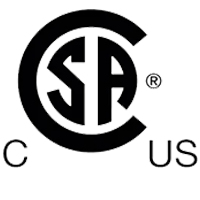
CSA Certified.
The Canadian standard is widely adopted by companies in North America and meets North American Standards.

InMetro Certified.
Accreditation body of Brazil. Equipment must conform to INMETRO standards for use in hazardous areas.
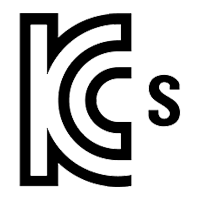
KCs Certified.
The Korean Occupational Safety and Health Agency. KOSHA. Required for all hazardous area safety equipment.

JNIOSH Certified.
The Japanese standard and certification from the National Institute of Occupational Safety and Health.
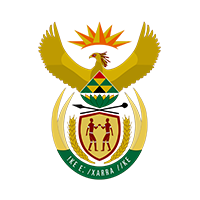
SANS Certified.
SANS is the South African National Accreditation System which governs the use of hazardous area devices.

